Technology You Didn’t Know Still Existed: The Telegram
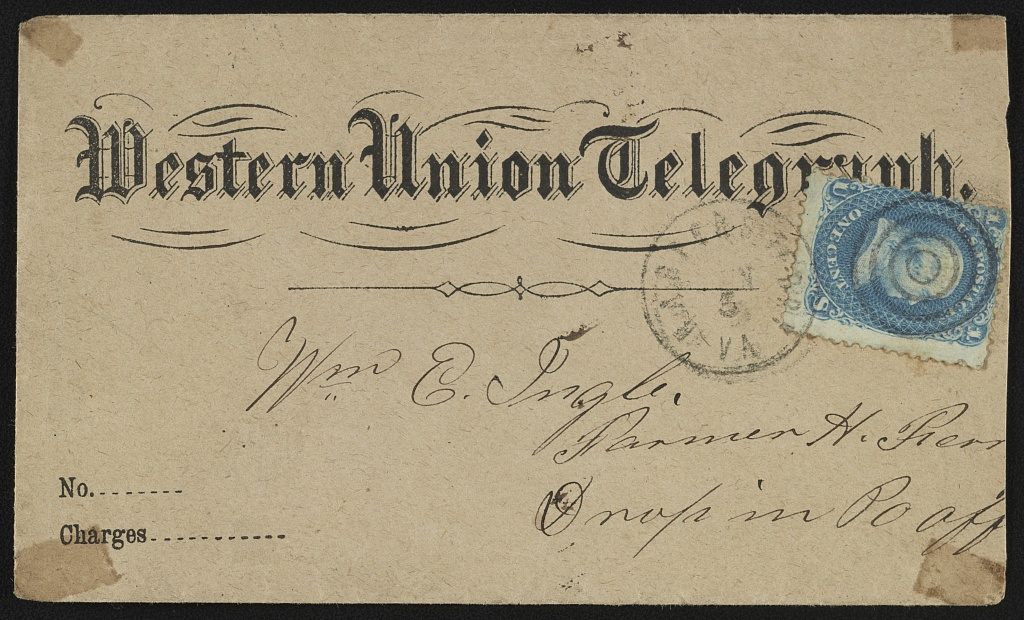 The envelope for a Western Union Telegraph, c. 1861 (Photo: Library of Congress)
The envelope for a Western Union Telegraph, c. 1861 (Photo: Library of Congress)
Today, where disposable instant messaging, emails, texts and tweets are all around us, it is a pleasant surprise to find out that the grandfather of quick communication is still with us.
Yes, it is still possible to send a personal, hand-delivered telegram.

A telegram sent to Atlas Obscura’s Editor-In-Chief from Luke Spencer on 22 May, 2015
On January 27th, 2006, the world’s most famous telegram agency Western Union announced that it “will discontinue all Telegram and Commercial Messaging services..” For over 150 years the world’s greatest joys, deepest condolences and proudest successes had been hand delivered within their iconic yellow envelopes, written in its own distinctive brief prose.
At one point in the 1920s, Western Union and its army of uniformed messengers were sending more than 200 million telegrams every year. But the advent of faxes, then emails and finally SMS messaging saw the numbers dwindle, bringing to an end the golden age of the telegram.
But a handful of companies are carrying on the tradition. Principal amongst them is the International Telegram Company who inherited and still operate Western Union’s former telex and cablegram network. They are well aware of their own anachronism: “Most people are pretty surprised to learn that telegrams still exist, and in fact are still pretty widely used in some parts of the world,” says Colin Stone, Director of Operations. Overall, he says that about 20 million telegrams are still delivered every year.
And this isn’t just a gimmick; text messages and e-mails might work for saying hi but when it comes to urgent hand-delivered messages, the telegram is still the gold standard. “People use them for canceling contracts and sending legal notifications because a copy of the message is retained in our files for 7 years and can be legally verified,” explains Stone. Everything from legal notices to social correspondence for births, funerals and weddings are being routinely sent by telegrams. In the U.S., Stone says that people still send telegrams for a simple reason, echoing the famous quote about why humans climb Mount Everest—“because they can.”

Samuel Morse, c. 1840 (Photo: Public Domain/WikiCommons)
Prior to the invention of the telegraph, long distance communication was as slow as the horse which carried it; the Pony Express could deliver a message across America in roughly 10 days. This was obviously not ideal. In 1825, an aspiring painter was in Washington, D.C. working on a commissioned portrait of the famed French general Marquis de Lafayette when he got an urgent message from his father saying, “Your dear wife is convalescent.” Leaving the painting of Lafayette unfinished, the painter rushed home to New Haven, Connecticut, to find that his beloved wife was not only dead but had already been buried. He devoted himself to creating a faster method of long-distance communication, and would lend his name to an invention that deliver messages almost instantly; his name was Samuel Morse.
Morse learnt that over in England, inventors William Fothergill Cooke and Charles Wheatstone had installed the world’s first commercial telegraphy system on the Great Western Railway in 1838. Their patented system involved a series of needles that pointed to letters of the alphabet on a board, spelling out a message. Samuel Morse developed a single wire electrical telegraph that proved more simple and popular. Along with his assistant Alfred Vail, they created the Morse code signaling alphabet, and patented his electric telegraph to deliver it. In May 1844, Morse sent the ominous sounding message from the floor of the U.S. Supreme Court in Washington to Baltimore, “WHAT HATH GOD WROUGHT.”
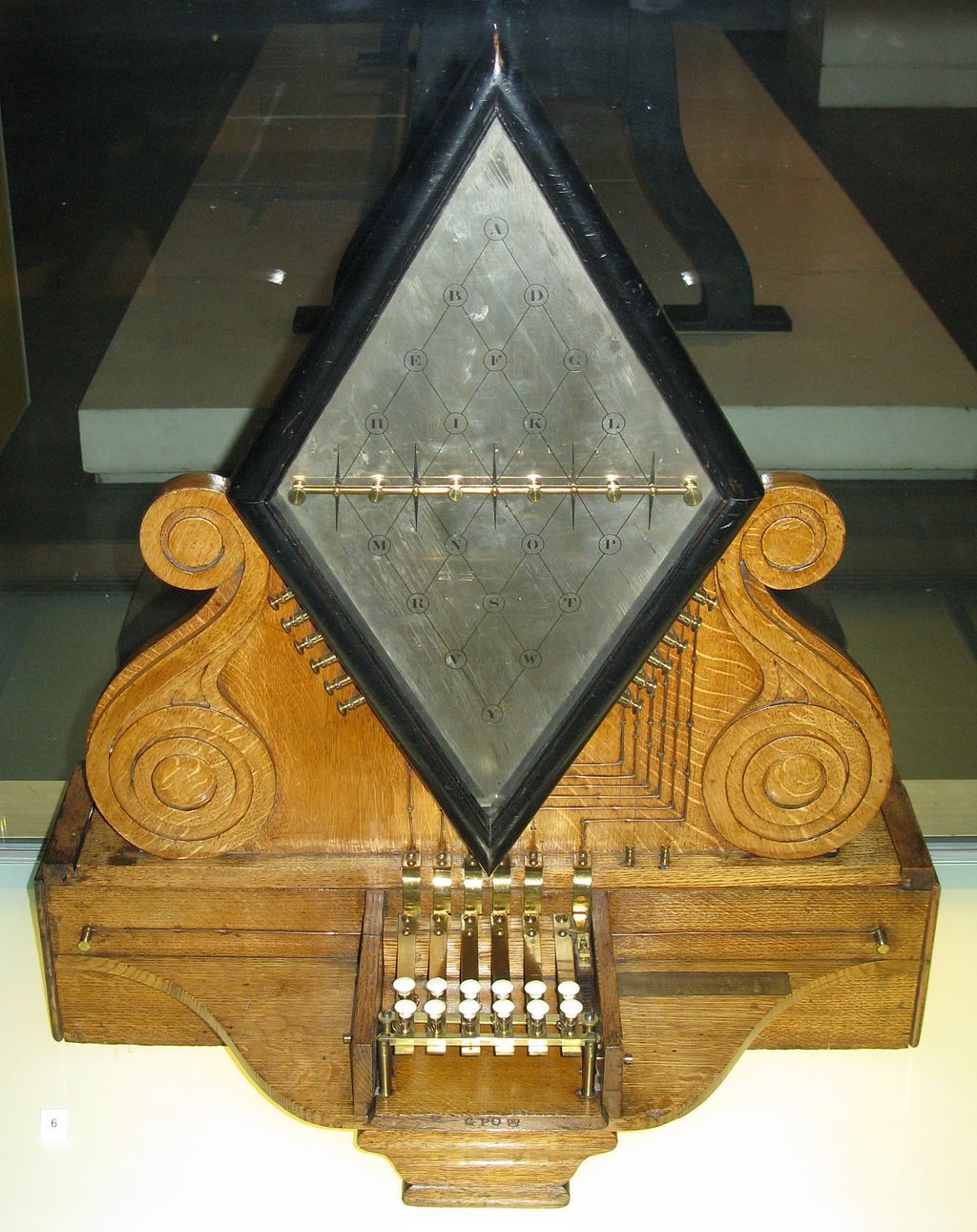
William Fothergill Cooke and Charles Wheatstone’s electric telegraph from 1837, which is now held in the London Science Museum
(Photo: Geni/WikiCommons CC BY-SA 4.0)
Almost overnight telegraphs transformed the way the world communicated. In 1846 there was only Morse’s experimental line between Baltimore and Washington, but by 1850 there were 12,000 miles of cable and over 20 companies in the United States alone. Tom Standage, in his 1998 book The Victorian Internet, described how “it revolutionized business practice, gave rise to new forms of crime....romances blossomed over the wires and secret codes were devised by some users and cracked by others.”
The method of sending a telegram was simple. By visiting the office of a telegraph company, or later, by over the telephone, you would compose a message as briefly as possible, for telegrams charged by the word. The message was then conveyed by the electric wire in Morse code to its destined office where it would be written or typed, stuck to a form and hand delivered, usually by a boy on a bicycle. If you were living in Pittsburgh in the 1850s it was entirely possible your telegram would have been delivered by a young Andrew Carnegie. Or over in Port Huron, Michigan, a boy of the name Thomas Edison.
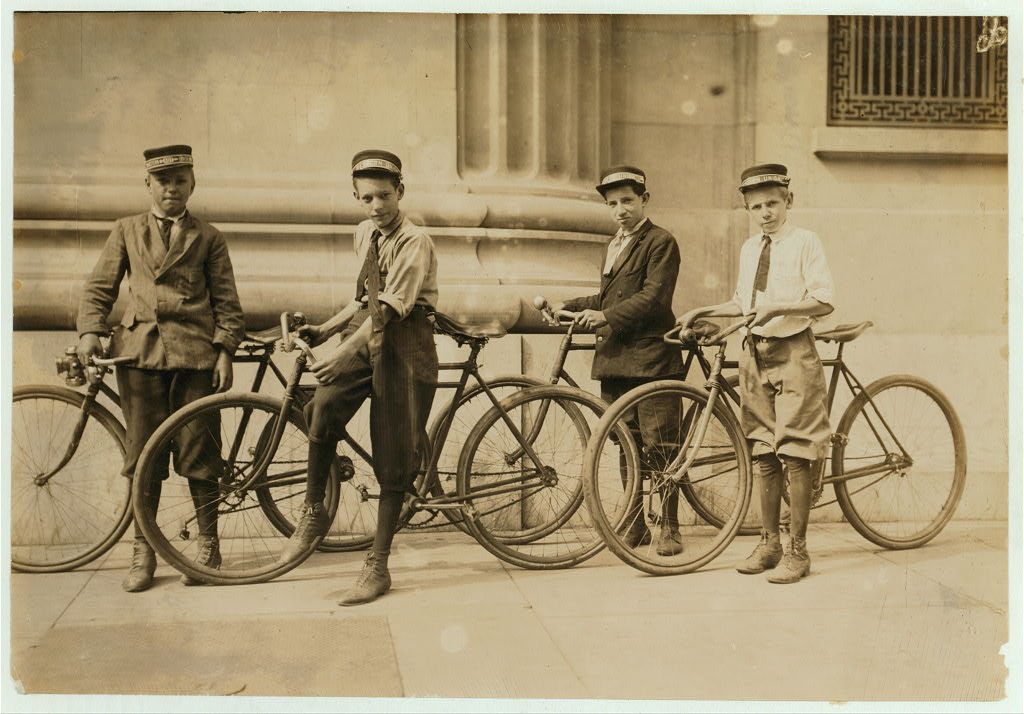
A group of Western Union telegraph messengers in Norfolk, Virginia, photographed by Lewis Wickes Hine in 1911 (Photo: Library of Congress)
So prevalent was the number of aspiring cable companies, that Standage notes in the 1852 US Census, “the telegraph industry even merited 12 pages to itself.” One such company was the New York and Mississippi Valley Printing Telegraph Company. Gradually buying up its competitors, it would come to virtually monopolize the entire telegram industry under its new name, Western Union.
Known today principally as a money wiring service, Western Union was once the premier American telegraph operator. In 1861 it completed the first transcontinental telegraph line in the U.S., instantly rendering the Pony Express obsolete. Such was its success that in 1884, it was one of the original 11 stocks on the Dow Jones Industrial Average. (The shareholders were no doubt delighted to read of their profits on the stock exchange ticker, especially as it was Western Union which had invented it.) By 1930, Western Union had moved into an opulent example of art deco architecture on 60 Hudson Street, New York. With the tagline “Telegraph Capital of the World,” it came complete with over 70 million feet of cable, its own gymnasium and an auditorium for the instructing of messengers.
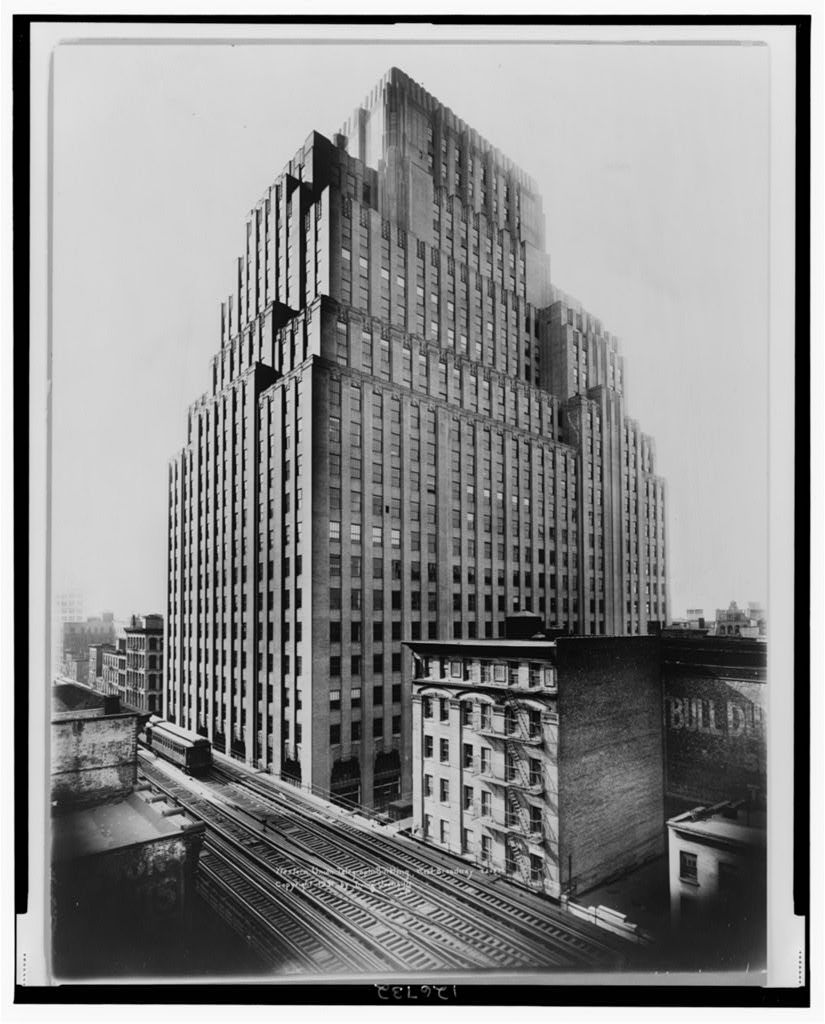
The Western Union Telegraph Building in New York City, photographed in 1931 (Photo: Library of Congress)
In 1854 in a house overlooking Gramercy Park, the industrialist, philanthropist and inventor of such varied creations as the first U.S. steam locomotive and Jell-O, Peter Cooper, met a prominent New York financier named Cyrus West Field. Together with a team of three other backers, including Samuel Morse, they created a 400-mile underwater telegraph line connecting Newfoundland with Nova Scotia. Three years later, West started laying the first telegraph wire along the Atlantic ocean floor.
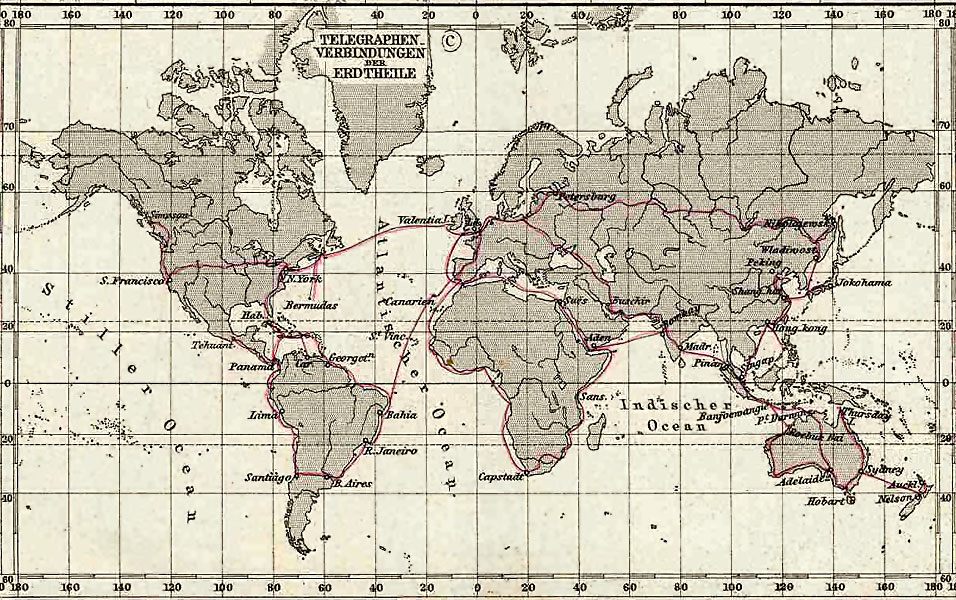 A map of telegraph connections in 1891 from Stielers Hand Atlas (Photo: Public Domain/WikiCommons)
A map of telegraph connections in 1891 from Stielers Hand Atlas (Photo: Public Domain/WikiCommons)
Just 14 years after Morse’s first telegram, Queen Victoria sent a message of congratulations to President James Buchanan. The first transatlantic telegram was met with such hysteria in New York that impromptu parades and fireworks accidentally set fire to City Hall.
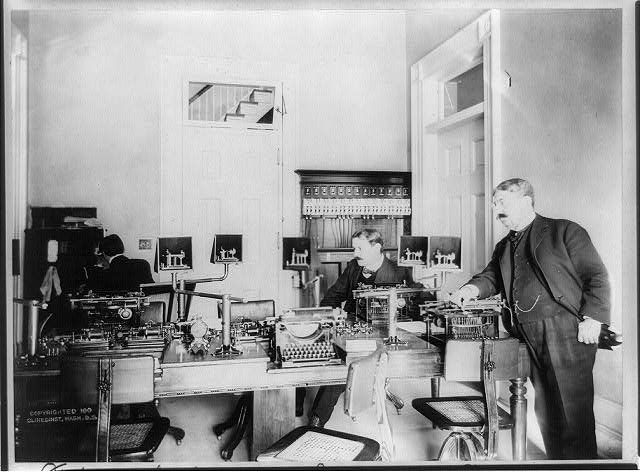
Photograph showing the White House telegraph office and staff during Theodore Roosevelt’s administration, 1902 (Photo: Library of Congress)
It’s hard to imagine now, but the birth of the telegram transformed language as much as business. Just as instant messaging today has developed its own abbreviated lexicon of terms such as IRL, IMHO, and ICYMI, so to did telegraphy. Due to telegrams being priced by the word, brevity was the order of the day. Companies soon did a thriving business in publishing code word directories.
In one thrifty telegram comprising of the word COQUARUM the poor recipient would be reliably informed that the ‘engagement broken off.’ In business you might well ask someone to LOZENGE (“what shall we do with documents and bills of lading attached”) to which the stern reply GIGGLE would instruct, “Use your discretion as to delivery of documents.”
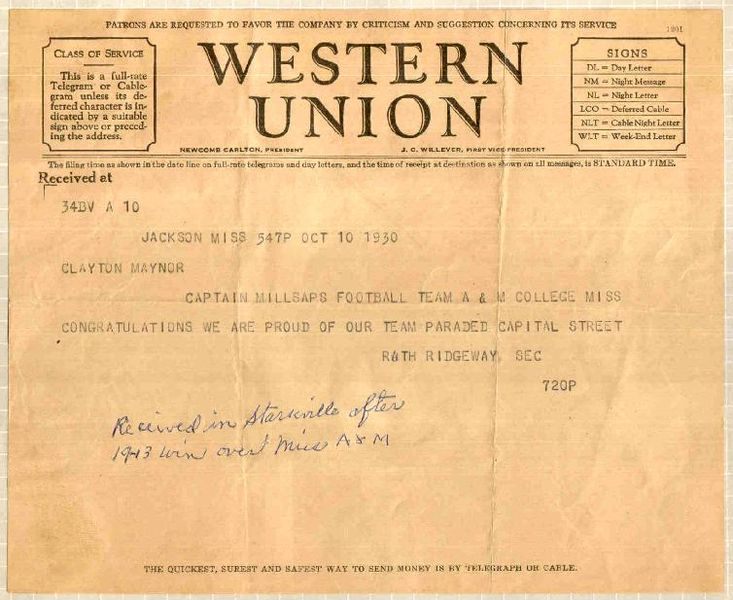
AWestern Union telegram from 1930, announcing the Millsaps College beats MSU (then Mississippi A&M) in football
(Photo: NatalieMaynor/WikiCommons CC BY 2.0)
Soon a Hemingway-esque prose developed, with brief, terse sounding messages omitting expensive pronouns and adjectives. Guide books such as Nelson E. Ross’ 1928 How to Write Telegrams Properly had whole chapters devoted to “Extra Words and Their Avoidance”, and “How Unnecessary Words Creep In”.
Under the ethos that “Brevity is the soul of Telegraphy”, social formalities in letter writing such as “Dear Madame” and “Yours very truly” were quickly done away with. Shortness and pithiness were the order of the day. During the filming of The Big Sleep, starring Humphrey Bogart and Lauren Bacall, the labyrinthine plot was so confusing that director Howard Hawks cabled author Raymond Chandler asking who killed the chauffeur. Chandler sent a simple telegram back— “NO IDEA”.
The shortest telegram exchange sent is attributed to Oscar Wilde. Living in Paris, he is supposed to have cabled his publisher in London to see how how his new book was doing. The telegram simply read “?” to which the reply cabled back was “!” (Although the story might be apocryphal; the same telegram has been attributed to Victor Hugo.)
While the majority of telegrams were used for everyday conversation and business, some are particularly poignant. Such as this desperate message telegraphed on the night of April 14th, 1912:
SOS SOS CQD CQD TITANIC. WE ARE SINKING FAST. PASSENGERS ARE BEING PUT INTO BOATS. TITANIC.
During wartime, the most dreaded telegram of all was hand delivered on behalf of either the War Department or the Navy Department. The message began “The Secretary of War (for soldiers and airmen) or Secretary of Navy (for sailors and marines), regrets to inform you that [name, rank and serial number of the man in the military service] was killed in action (or missing in action).”
Other telegrams changed world history. One of the most infamous was a telegram consisting of a secret message in groups of coded numbers that Western Union delivered to the German Ambassador to Mexico on January 19th, 1917. Sent by German Foreign Minister Arthur Zimmerman it was intercepted by British intelligence and sent to President Woodrow Wilson.
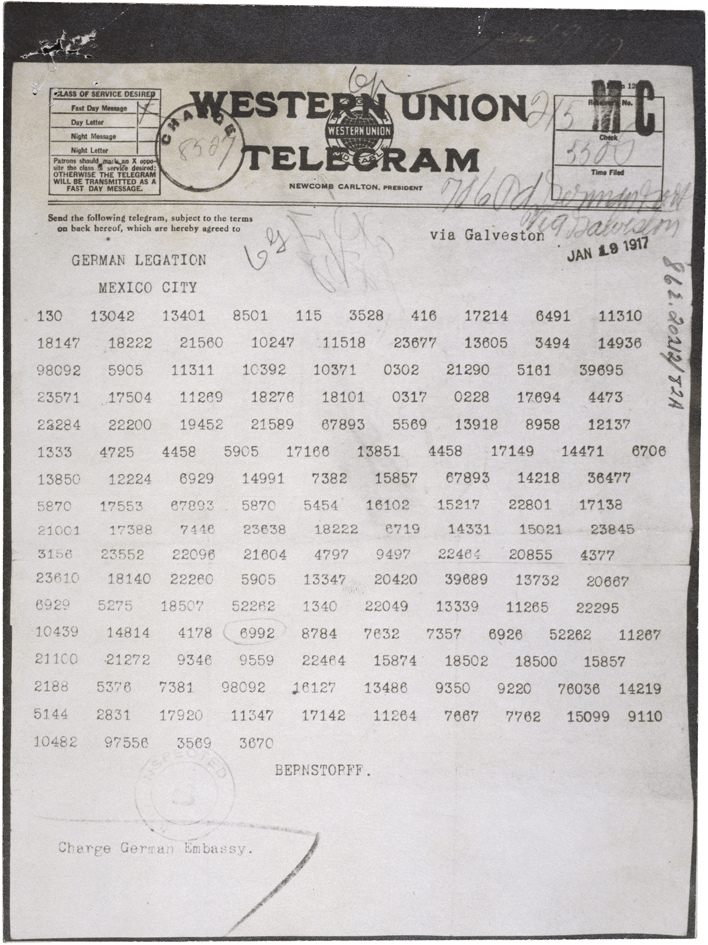
The Zimmerman telegram January 19, 1917 (Photo: Public Domain/WikiCommons)
The telegram spelt out that Germany would offer US territories to Mexico in return for joining the German side. The telegram was published in the US press on March 1st, 1917, and a month later, despite Wilson being elected under the banner ‘He Kept Us Out of the War’, the United States declared war on Germany. In his book The Codebreakers, David Kahn rightly states that,”no other single cryptanalysis has had such enormous consequences......never before or since has so much turned upon the solution of a secret message.”
Telegrams may not be as widespread as they once were, but through companies such as the International Telegram Company they remain perhaps the most elegant way to send a message since 1844.



Follow us on Twitter to get the latest on the world's hidden wonders.
Like us on Facebook to get the latest on the world's hidden wonders.
Follow us on Twitter Like us on Facebook